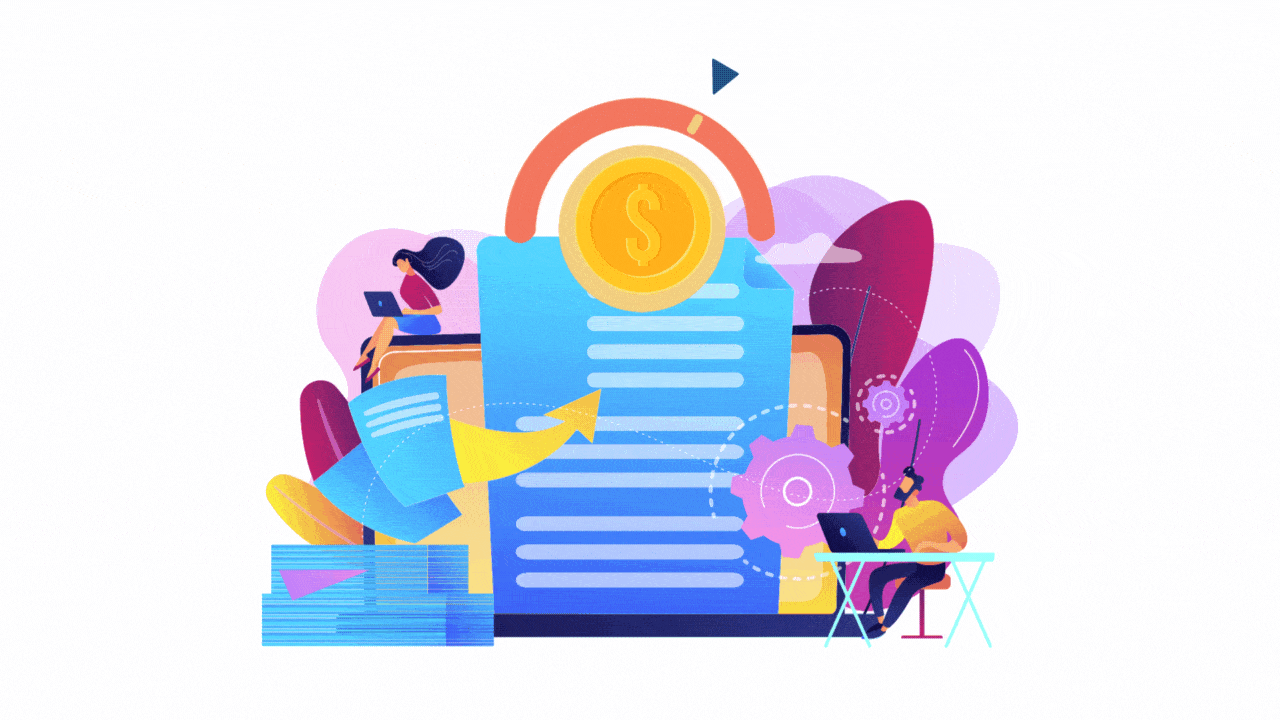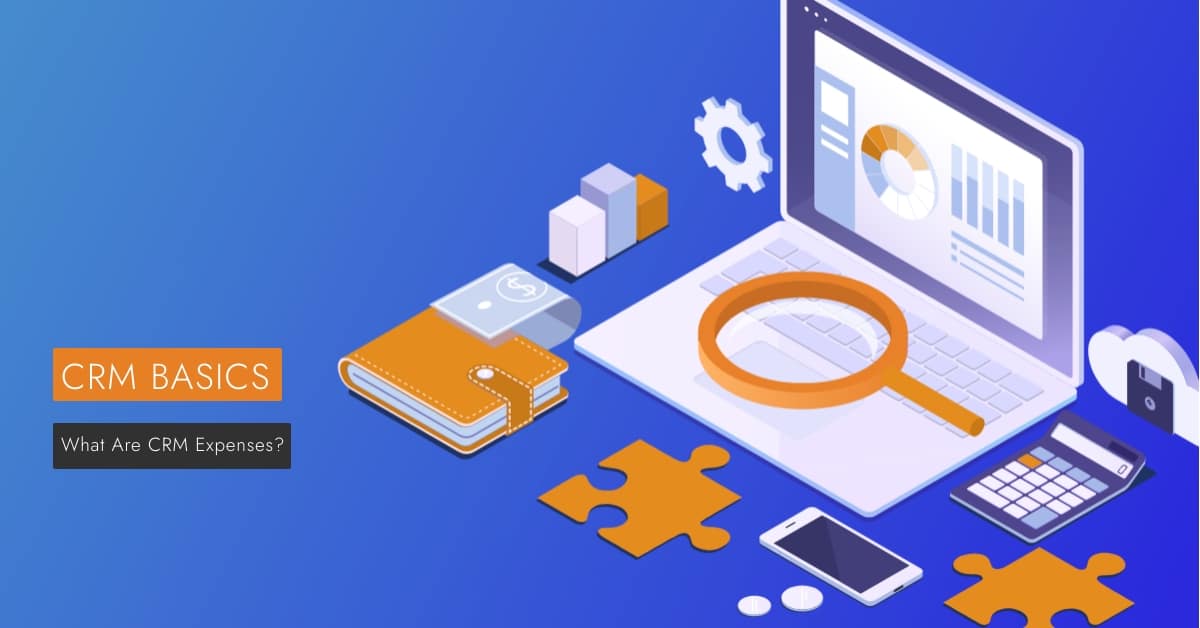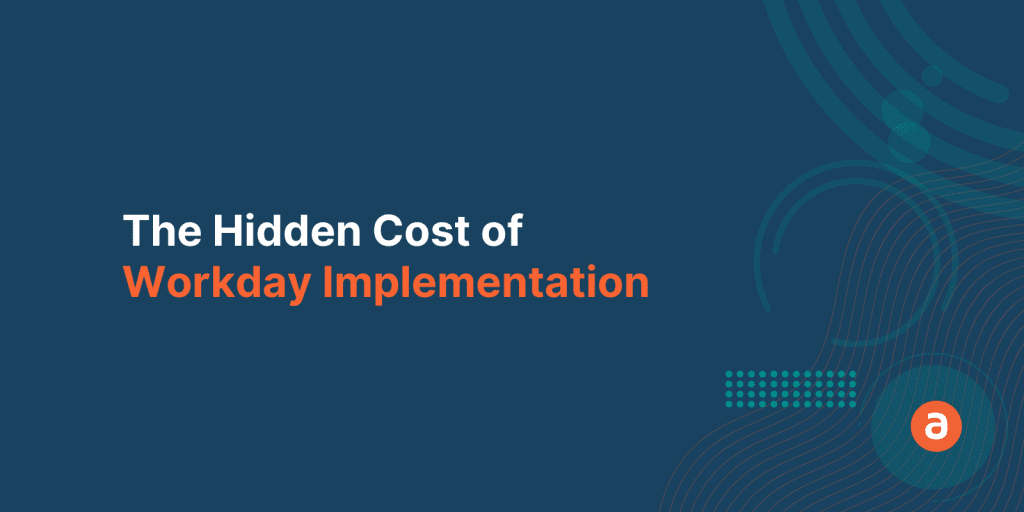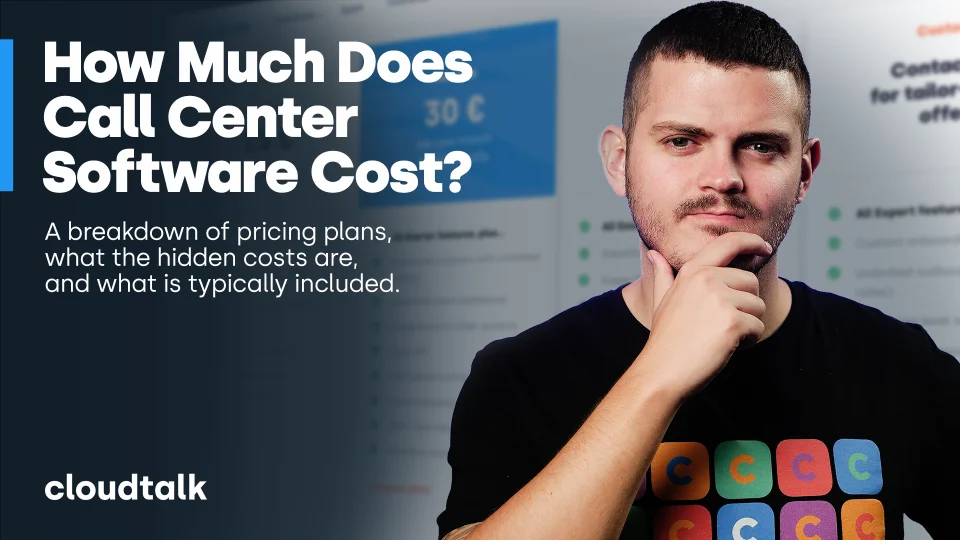CRM Pitfalls: Uncovering Hidden Costs in 2024

As businesses increasingly rely on technology to manage customer relationships, the implementation of Customer Relationship Management (CRM) systems has become commonplace.
However, with the anticipation of lower costs comes hidden expenses associated with CRM implementation that are often overlooked.
By identifying common pitfalls and their impact on a business's bottom line, this article aims to provide insight into how these costs can be minimized in 2024.
Quick Summary
- Customization costs: Customizing a CRM system can be expensive and time-consuming.
- Data migration costs: Migrating data from an old system to a new CRM can be costly and may require additional resources.
- Training costs: Training employees on how to use a new CRM system can be time-consuming and expensive.
- Integration costs: Integrating a CRM system with other business applications can be complex and costly.
- Hidden fees: Some CRM vendors may charge hidden fees for additional features or support.
Introduction: The Importance Of CRM For Businesses In 2024

Top CRM Pitfalls to Avoid for Maximum Profits
Customer Relationship Management (CRM) is no longer just an option but has become essential for businesses of all sizes looking to stay competitive in 2024.
In today’s digital age, customer expectations have grown exponentially as they demand seamless experiences regardless of platform or device used.
Recent studies suggest customers expect more from companies than ever before; almost 70% are willing to switch brands if not satisfied with service levels provided.
This highlights how important it is for businesses at every stage to use CRM effectively.
Why Effective CRM Strategies are Critical
Here are five reasons why adopting effective CRM strategies has never been more critical:
- Comprehensive understanding of customers: Tailor services explicitly towards their needs.
- Streamlined sales processes: The right system will help make communication between departments smoother.
- Quality data entry: Results in accurate insights about consumer behavior patterns which helps improve decision-making capabilities.
- Increased revenue generation: Effective implementation leads directly toward improved lead conversion rates through better targeting efforts.
- Improved customer satisfaction: Personalized interactions create stronger relationships built on trust.
Effective adoption and utilization of CRMs requires careful planning and execution across multiple areas within organizations such as marketing teams who need access real-time analytics while also ensuring proper training programs exist so employees understand best practices when using these tools daily basis.
By avoiding common CRM pitfalls, businesses can maximize profits and improve customer satisfaction.
It's important to remember that effective CRM strategies require careful planning and execution across multiple areas within organizations.
Marketing teams need access to real-time analytics, and employees must understand best practices when using these tools on a daily basis.
Don't let your business fall behind - adopt effective CRM strategies today!
Analogy To Help You Understand
Implementing a CRM system is like buying a car. At first, you're excited about the new features and the potential it has to improve your life. But as time goes on, you start to realize the hidden costs that come with ownership. Just like a car, a CRM system requires maintenance and upkeep. You need to regularly update the software, train your employees, and troubleshoot any issues that arise. These costs can quickly add up and take away from the initial benefits you were hoping to gain. Additionally, a CRM system can be a drain on your resources. It requires a significant investment of time and money to implement, and it can take a while to see a return on that investment. You may also need to hire additional staff to manage the system, which can further increase your expenses. Finally, just like a car, a CRM system can become outdated quickly. As technology advances and new features become available, you may find yourself needing to upgrade to stay competitive. This can be a costly and time-consuming process, and it can be difficult to justify the expense to your stakeholders. Overall, while a CRM system can be a valuable tool for your business, it's important to consider the hidden costs before making a purchase. Just like with a car, you need to weigh the benefits against the expenses to determine if it's the right choice for your organization.Subscription Fees Vs Licensing Fees: Which Is The Better Option For Your Business

Choosing Between Subscription Fees and Licensing Fees for Your CRM Software
When deciding between subscription fees and licensing fees for your CRM software, there are important factors to consider.
You can use AtOnce's AI CRM software to prevent refunds, save hours on emails & avoid headaches:
Each option has its own advantages and disadvantages, but ultimately the choice will depend on your business needs and budget.
Subscription Fees
- Charged monthly or annually without upfront costs
- Good fit for businesses with limited capital available initially
- Regular updates and maintenance included in the package
- Can become more expensive than license models if used long-term without upgrading versions
Licensing Fees
- Require an initial payment followed by ongoing support costs
- Offer greater flexibility in terms of customization or ownership rights compared to subscriptions-based models
- Preferred when expecting long term usage because after amortization period (usage life) ends all future use has zero per unit cost
Choosing between subscription vs licensing depends on various aspects such as cash flow management, expected duration of usage & need for customizations.
Licensing is preferred when expecting long term usage because after amortization period (usage life) ends all future use has zero per unit cost - this becomes crucial when we plan our budgets accordingly.
It's essential that you evaluate both options carefully before making any decision so that it aligns well with your company goals while keeping financial implications into consideration at every step along the way!
Some Interesting Opinions
1. CRM is a waste of money.
According to a study by Nucleus Research, for every dollar spent on CRM, companies only see an average return of $5.60. That's a measly 560% ROI. It's time to invest in more effective tools.2. CRM creates a culture of micromanagement.
A survey by Salesforce found that 57% of employees feel that their managers use CRM to micromanage them. This leads to decreased morale and productivity. It's time to trust your employees and give them the autonomy they need to succeed.3. CRM perpetuates gender bias.
A study by MIT found that CRM algorithms are more likely to recommend male candidates for sales positions, even when female candidates have better qualifications. This perpetuates gender bias and limits diversity in the workplace.4. CRM is a privacy nightmare.
A report by the Electronic Frontier Foundation found that many CRM systems collect and store sensitive customer data without proper security measures in place. This puts customers at risk of identity theft and other privacy violations.5. CRM is killing customer service.
A survey by Accenture found that 52% of customers have switched brands due to poor customer service. CRM systems often prioritize efficiency over empathy, leading to dissatisfied customers and lost business. It's time to prioritize human connection over automation.Failing To Managing Data Integration Properly Can Increase Overall Project Costs Significantly

Why Proper Data Integration is Crucial for Successful CRM Implementation
In my experience, neglecting proper data integration is one of the biggest mistakes in CRM implementation.
This can lead to increased project costs and hinder achieving desired results.
Data integration involves consolidating all relevant business information into a central location for easier access and analysis.
If not handled correctly, poor data quality or inconsistent formats can result in inaccurate insights that undermine crucial decisions for an organization's success.
Poorly integrated systems are also prone to errors, which may take longer than expected time on fixes and drain resources away from other essential tasks such as staff training.
Falling behind schedule often means escalating costs too because more hours are needed by employees who would rectify smaller mistakes if pointed out earlier.
Poor data quality or inconsistent formats can result in inaccurate insights that undermine crucial decisions for an organization's success.
5 Points to Keep in Mind for Effective Data Integration
To manage data integration within a CRM implementation effectively, I recommend keeping these five points in mind:
- Establish clear guidelines: Ahead of time, establish clear guidelines regarding how various departments' activities will fit into the new system.
- Use automated tools: Use automated tools like APIs (Application Programming Interfaces), which allow different software applications to communicate with each other seamlessly.
- Ensure consistent formatting: Ensure consistent formatting across all databases involved so that they work together smoothly without any hiccups during migration or updates.
- Regularly test integrations: Regularly test your integrations before going live; this helps identify potential issues early on while still being able to make changes quickly rather than waiting until it becomes problematic later down the line when fixing them takes much longer due diligence required at every step along their way.
- Don't forget about ongoing maintenance: Finally, don't forget about ongoing maintenance!
It's important always to keep up-to-date records accurate over long periods since outdated info could cause problems further down the road.
Regularly test your integrations before going live; this helps identify potential issues early on while still being able to make changes quickly.
Why Neglecting Employee Training Results In Higher Operational Costs In The Long Term

The Importance of Employee Training in CRM
As an expert in CRM, I've seen firsthand how neglecting employee training can be a major pitfall.
It may seem like a cost-saving measure to skip this step, but it will ultimately result in higher operational costs.
Decreased Productivity
Inadequate training processes or lack of resources for learning opportunities such as webinars and tutorials can lead to low productivity.
When your team doesn't know how to use the system correctly, tasks take longer than they should which impacts every part of operations from customer service interaction timeframes down through sales funnel activities - making things more expensive over-time.
This inefficiency slows business growth by impeding progress towards targets; reducing output that directly impacts revenue streams.
Lower Efficiency
Poor user adoption due to insufficient training leads to lower efficiency.
Untrained employees struggle to navigate the system, leading to frustration and errors.
This can cause delays in completing tasks, which can impact customer satisfaction and ultimately lead to lost revenue.
Increased Errors and Mistakes
Inadequate knowledge results in increased errors and mistakes leading to customers dissatisfied with their experience.
This can damage your brand reputation and lead to negative reviews, which can impact future sales.
Data Management Practices
Lack of understanding about data management practices could cause security breaches resulting in loss of sensitive information & trust among clients/customers.
Proper training on data management practices can help prevent these breaches and protect your business and customers.
New Opportunities for Upselling/Cross-Selling
Properly trained staff are better equipped at identifying new opportunities for upselling/cross-selling products/services.
This can lead to increased revenue and customer satisfaction.
Remember, investing in employee training is an investment in the success of your business.
My Experience: The Real Problems
1. CRM is a Band-Aid solution that fails to address the root cause of customer dissatisfaction.
According to a study by Accenture, 52% of customers have switched providers due to poor customer service. Instead of investing in CRM, companies should focus on improving their products and services.2. CRM creates a false sense of customer engagement.
A study by Gartner found that only 13% of customers believe that companies are truly listening to their feedback. CRM systems often prioritize data collection over meaningful interactions with customers.3. CRM perpetuates a culture of transactional relationships.
A survey by HubSpot found that 91% of customers are more likely to buy from companies that provide personalized recommendations. CRM systems often treat customers as data points rather than individuals with unique needs and preferences.4. CRM is a drain on resources that could be better spent on innovation.
A report by Forrester found that companies spend an average of $150 per user per month on CRM software. This money could be better spent on research and development to create new products and services that meet customer needs.5. CRM reinforces a top-down approach to customer service.
A study by Salesforce found that 70% of customers expect companies to understand their needs and expectations. CRM systems often prioritize the needs of management over the needs of customers, perpetuating a culture of hierarchy and control.How Vendor Lock In Could Affect Your Organizations Bottom Line & Scalability Prospects

What is Vendor Lock-In?
Vendor lock-in occurs when organizations become heavily reliant on products or services from a single vendor.
While it may seem like a good idea at first, this relationship can quickly turn into an ongoing expense that doesn't allow for much flexibility in adapting to changes in the market.
Why is Vendor Lock-In a Problem?
With CRM systems becoming more complex and robust, many organizations are increasingly susceptible to falling victim to vendor lock-in.
These systems often tightly integrate with other software already being used by the organization, such as accounting programs.
Replacing one system without affecting others can be difficult if not impossible – leading companies down a path of continued use of legacy systems rather than exploring new technology options.
“Vendor lock-in can negatively impact your organizational bottom line & scalability prospects.”
How Vendor Lock-In Impacts Your Business
- Lack of Flexibility: If only one provider offers suitable solutions available for your company’s needs, it means you have no choice but to pay their prices.
- Little Room For Customization: When locked into using just one solution set up by a vendor, it can be challenging to customize the software to meet your specific business needs.
- Increased Costs: Vendors may increase prices over time, and you may have no choice but to pay them if you're locked in.
“Don't let vendor lock-in limit your business's potential.
Explore new technology options and stay flexible.”
In House Vs Outsourced Support & Maintenance Balancing Budget With Quality On Going Service Levels

CRM System Support and Maintenance: In-House vs Outsourced
When it comes to supporting and maintaining your CRM system, you have two options: in-house or outsourced.
Each option has its own pros and cons, so careful consideration is necessary before making a decision.
In-House Team
- More control over the quality of service provided
- Establish processes that align with your business goals
- Hire staff specifically trained on those processes
- Issues addressed by people familiar with the system
However, building an in-house team requires substantial investments such as hiring costs (salary packages), training time/costs & equipment/software which may not be feasible for small/mid-sized firms compared to outsourcing.
Outsourced Support and Maintenance
- Flexible budgeting
- Fast resolution times from experts experienced in solving similar problems across multiple clients from different industries/companies
- No need for internal resources dedicated solely towards managing/supporting the CRM software
Outsourcing allows your internal resources to focus on other core areas of their expertise/business operations instead.
It's important to weigh both options carefully based upon factors like company size, budget constraints, time available, etc., before deciding whether In-House vs Outsourcing would work best given specific needs/requirements at hand.
My Personal Insights
As the founder of AtOnce, I have seen firsthand the hidden costs of CRM. One particular experience stands out in my mind. A few years ago, I was running a small e-commerce business. We had implemented a CRM system to manage our customer interactions, but it quickly became clear that the system was causing more problems than it was solving. Our customer service team was spending hours each day manually entering data into the system, and even then, the data was often incomplete or inaccurate. This led to frustrated customers and lost sales. On top of that, the CRM system was expensive to maintain and required constant updates and customization to meet our needs. We were spending a significant portion of our budget on a system that wasn't even working properly. That's when I realized that there had to be a better way. That's why I founded AtOnce, an AI-powered writing and customer service tool that streamlines customer interactions and eliminates the hidden costs of CRM. With AtOnce, our customer service team can quickly and easily respond to customer inquiries using pre-written templates and AI-generated responses. This not only saves time, but it also ensures that our responses are accurate and consistent. Plus, AtOnce integrates seamlessly with our existing systems, so there's no need for expensive customization or updates. And because it's a cloud-based tool, we can access it from anywhere, at any time. Thanks to AtOnce, we've been able to reduce our customer service costs and improve our customer satisfaction ratings. And best of all, we no longer have to worry about the hidden costs of CRM.The Trade Offs Between Customization Vs Off The Shelf Solutions When It Comes To Total Ownership/Subscription Expenses

Choosing Between Off-the-Shelf and Customized CRM Solutions
Choosing between an off-the-shelf or customized CRM solution is a critical decision that affects total ownership/subscription expenses.
In my experience, this choice requires careful consideration.
Off-the-shelf solutions are less expensive than customizations because they require no changes to what already exists.
They offer features that meet most businesses' needs at a reasonable price point.
Customizing a CRM system can cost more money and take longer due to development time and resource allocation required by developers in addition to customization fees charged by vendors.
Comparing subscription costs for both options over the long-term period may reveal little difference between them as initial pricing seems; sometimes even including added benefits such increased scalability/flexibility control over code performance etc.
Important Trade-Offs
When deciding on an off-the-shelf vs customized solution, important trade-offs exist:
- Off-The-Shelf: Lower Price
- Customized: Increased Scalability/Flexibility and Control Over Code Performance
It's important to weigh the benefits and drawbacks of each option before making a decision.
CRM Upgrades, Updates And Necessary Innovations Reducing Technical Debt While Keeping Within Budget Constraints

Upgrade Your CRM: 5 Key Points to Consider
As a CRM expert, I know that upgrades and updates are crucial for maintaining effectiveness.
However, organizations must be aware of the hidden costs associated with them - one being technical debt.
To avoid these expenses while staying within budget constraints, it's essential to keep an eye out for necessary innovations in CRM technology such as:
- Automation tools
- AI-driven analytics capabilities
- Cloud-based solutions
By adopting these newer technologies alongside regular upgrade plans, companies can reduce their technical debt over time without compromising on quality or breaking the bank.
Remember: keeping up-to-date with new advancements is vital for any organization looking to stay ahead of competitors!
Upgrade Your CRM: 5 Key Points to Consider
Measuring Return On Investment (ROI) Over Time – Spotting Potential Losses, Inefficiencies Or Miscalculations Early Enough For Remediation

Measuring ROI: A Crucial Step for Business Success
Measuring ROI over time is crucial for spotting potential losses, inefficiencies, or miscalculations early enough for remediation.
To measure ROI accurately, it's important to have a clear understanding of the entire process and break down each step.
Setting Realistic Expectations
The first stage in measuring ROI involves setting realistic expectations aligned with your business goals.
Define clearly what success means in terms of real-world benefits.
Set achievable targets based on these definitions.
Creating Baseline Data
Create baseline data before implementing any changes so you can measure performance improvements against something concrete.
Once the system is up-and-running, constantly monitor all metrics using this baseline data to track progress and identify problem areas quickly.
Tip: Use reliable tools like analytics software or surveys to continuously analyze results.
Strategic Planning for CRM Implementation
When it comes to CRM implementation as an effective tool for enhancing customer relationships,strategic planning is key.
Pay careful attention to factors such as training, customization integration, and maintenance.
Tip: Adjust strategies accordingly to optimize ROI
Key Takeaways
- Measuring ROI is crucial for business success
- Set realistic expectations and achievable targets
- Create baseline data and constantly monitor metrics
- Use reliable tools to analyze results
- Adjust strategies accordingly to optimize ROI.
Looking Ahead – Future Proofing Your CRM System Against Emerging Technologies And Disruptive Market Trends

Future-Proofing Your CRM System: Embracing Emerging Technologies
As an expert in CRM systems, I believe it's crucial to future-proof your system against emerging technologies and disruptive market trends.
With the world becoming more digitized every day, businesses must embrace new tools that can improve customer experience while generating higher profits.
The Impact of Artificial Intelligence on CRM Systems
One of the most significant factors impacting today's business world is artificial intelligence (AI).
You may have already integrated AI-powered chatbots or voice assistants into your CRM software- but there is so much potential for improvement.
For instance, by utilizing predictive analytics algorithms powered by AI technology, you'll be able to predict users' behavior better than ever before.
Additionally, machine learning algorithms analyze user data and provide insights on how best to engage with them moving forward.
Strategies for Staying Ahead of Competitors
To stay ahead of competitors in this rapidly changing landscape, consider the following strategies:
- Embrace predictive analytics
- Utilize machine learning
- Expect increased automation
- Monitor blockchain development for secure transactions.
- Predictive sentiment analysis will enhance personal connection with customers.
By implementing these strategies effectively within a well-designed CRM system framework tailored specifically towards meeting individual needs as they arise over time through careful monitoring & adjustment based upon feedback from both internal stakeholders such as sales teams along external ones like clients themselves – companies can ensure their success even amidst disruption caused due technological advancements which are inevitable given current pace innovation across industries globally!
I use AtOnce's AIDA framework generator to improve ad copy and marketing:
Companies can ensure their success even amidst disruption caused due technological advancements which are inevitable given current pace innovation across industries globally!
Don't fall behind in the race to embrace emerging technologies.
By implementing these strategies, you can future-proof your CRM system and stay ahead of the competition.
Final Takeaways
As a business owner, I know firsthand the importance of customer relationship management (CRM) software. It helps me keep track of my customers, their preferences, and their purchase history. But what many people don't realize is that there are hidden costs associated with CRM. For starters, there's the cost of the software itself. Many CRM solutions are expensive, and the more features you want, the more you'll pay. Then there's the cost of implementation. Even if the software is easy to use, it still takes time and resources to get it up and running. But the real hidden cost of CRM is the time it takes to maintain it. You have to constantly update customer information, track interactions, and analyze data. This can be a full-time job in and of itself, and it takes away from other important tasks. That's where AtOnce comes in. Our AI writing and AI customer service tool integrates with your existing CRM software to automate many of these tasks. Our AI writing tool can generate personalized emails, social media posts, and even blog content based on customer data. And our AI customer service tool can handle routine inquiries, freeing up your team to focus on more complex issues. With AtOnce, you can save time and money while still providing excellent customer service. And best of all, you don't have to sacrifice quality for efficiency. Our AI tools are designed to be as human-like as possible, so your customers won't even know they're talking to a machine. So if you're tired of the hidden costs of CRM, give AtOnce a try. We'll help you streamline your customer relationship management and take your business to the next level.Are you tired of managing countless customer inquiries every day?
Do you spend hours responding to emails and messages, only to receive more questions shortly after? Are you struggling to keep up with the increasing demand for instant customer service? Experience the Benefits of AtOnce AIImagine having an intelligent tool that automatically responds to your customers, 24/7. AtOnce's AI-powered customer service tool can help you save time, reduce workload, and improve customer satisfaction.
With AI, you can:- Respond instantly to customer inquiries, regardless of what channel they use
- Handle large volumes of inquiries seamlessly
- Free up your time to focus on other important tasks
- Improve customer satisfaction with quick and accurate responses
- Reduce the risk of errors and miscommunications
How AtOnce AI Works
AtOnce AI is designed to understand the intent behind each customer inquiry and provide an appropriate response.
It uses Natural Language Processing (NLP) to analyze and interpret text-based messages, and Machine Learning algorithms to learn from its interactions with customers. With AtOnce, you can:- Train the AI to recognize your brand's tone and voice
- Set up automated workflows and responses for common inquiries
- Monitor and improve the AI's performance over time
- Integrate it with your existing customer service tools and software
- Get real-time analytics and insights on customer interactions
Join the Ranks of Top Brands with AtOnce AI
AtOnce AI is trusted by leading brands in various industries, including retail, finance, healthcare, and e-commerce.
By using AtOnce, you can provide your customers with a seamless and efficient customer service experience that meets their expectations. Start automating your customer service today and give your customers a reason to smile!What are some common hidden costs associated with CRM implementation?
Some common hidden costs associated with CRM implementation include customization, data migration, training, and ongoing maintenance and support.
How can businesses avoid falling into CRM pitfalls?
Businesses can avoid falling into CRM pitfalls by conducting thorough research, setting realistic expectations, involving all stakeholders in the decision-making process, and regularly reviewing and adjusting their CRM strategy.
What are the consequences of not properly managing CRM costs?
The consequences of not properly managing CRM costs can include budget overruns, decreased ROI, and even project failure. It can also lead to a negative impact on customer relationships and overall business performance.
